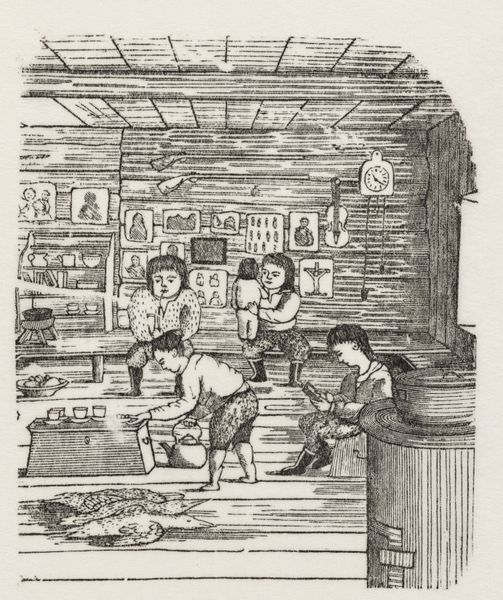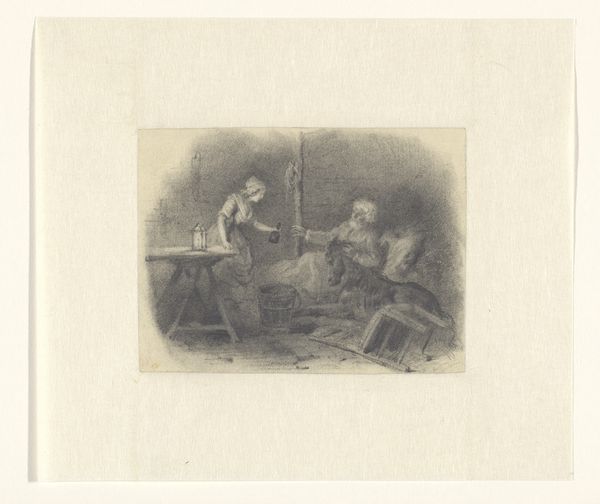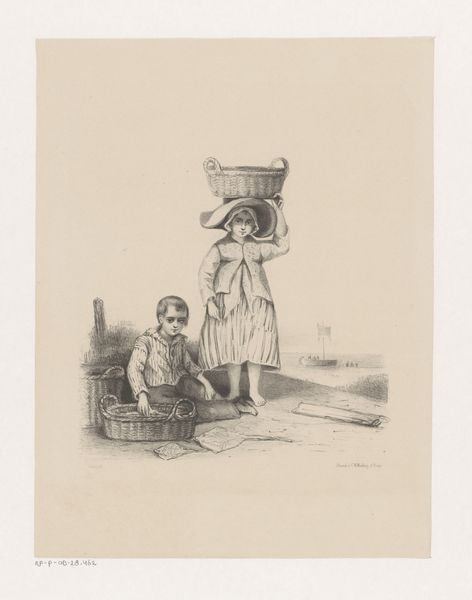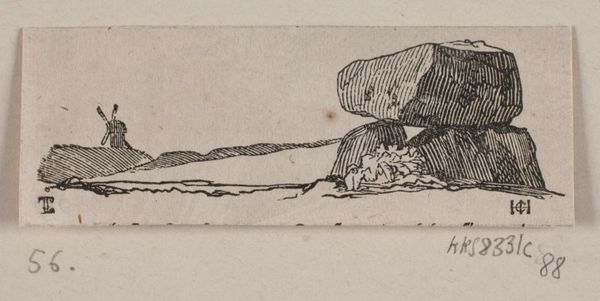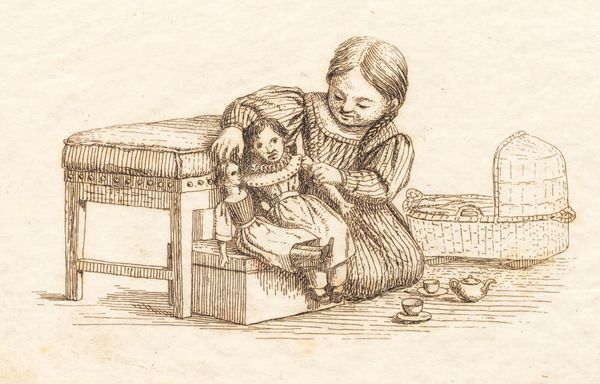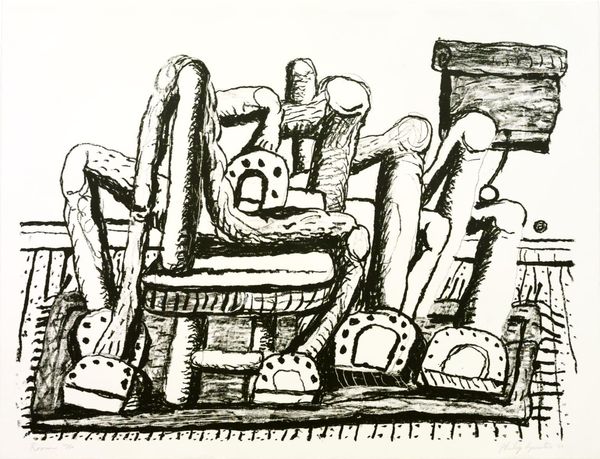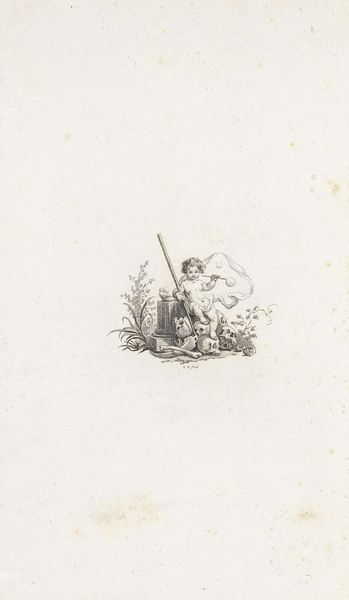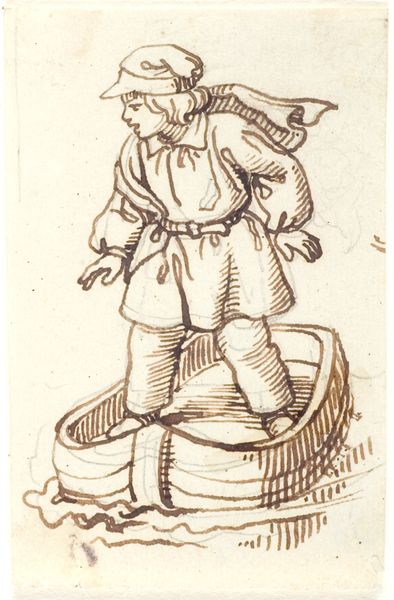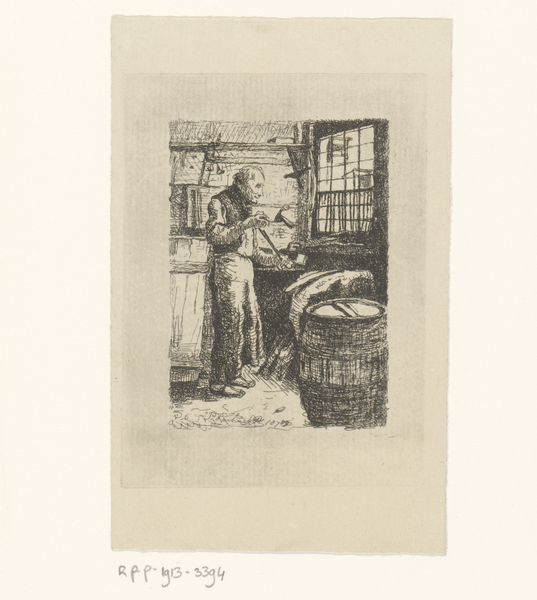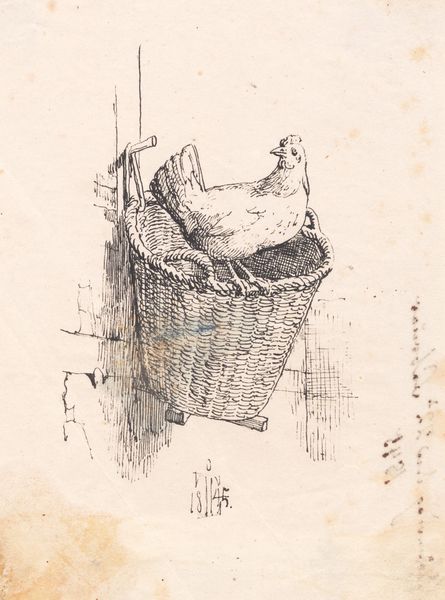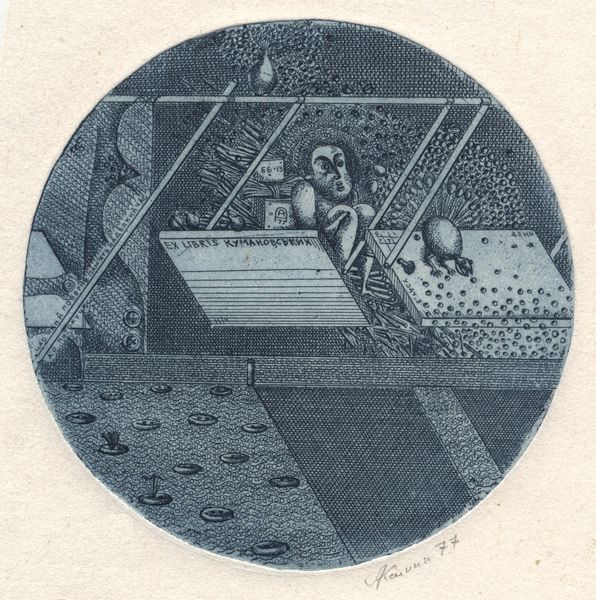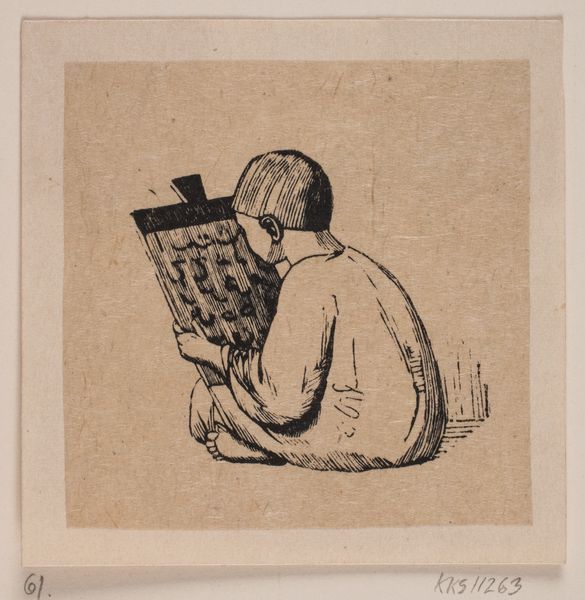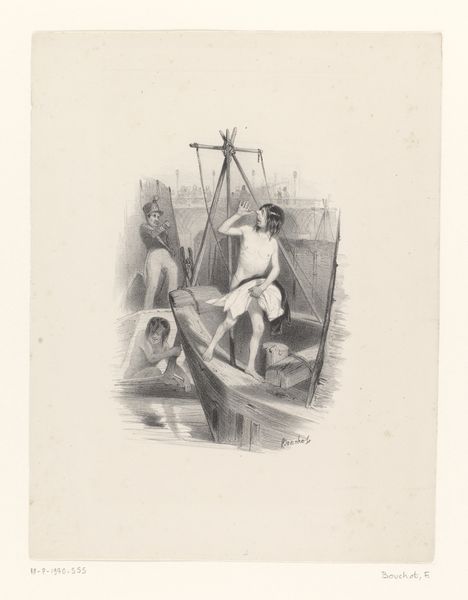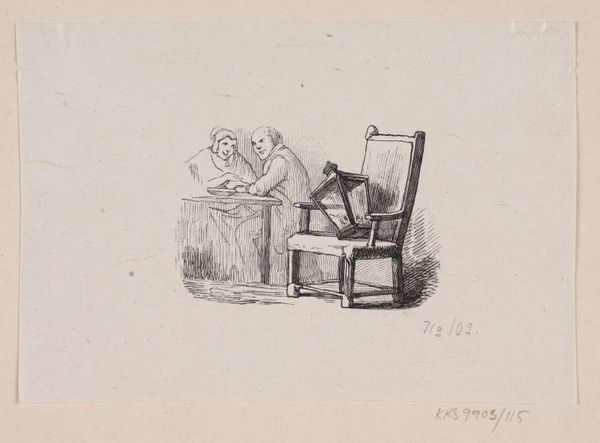
drawing, graphic-art, print, woodcut
#
drawing
#
graphic-art
# print
#
figuration
#
woodcut
#
realism
Dimensions: 46 mm (height) x 61 mm (width) (billedmål)
Curator: Take a look at this intriguing piece from 1859-1860. It’s entitled "Småbilleder: fedtlamper og siddende figur", and it comes to us from an artist with the profile name of Abraham. Editor: It possesses an austere quality. The textures created via woodcut read beautifully at this scale, providing what I sense is intended as a documentary-style composition, of common implements used day-to-day. The white paper supports the heavy, dark marks of the ink effectively. Curator: It is indeed a woodcut print. The piece uses stark realism in depicting domestic items and a figure, presenting quotidian objects in almost clinical arrangements. Its value stems less from an artist’s innovation than in providing insight into 19th century domestic life in Greenland. The drawing depicts what are understood to be domestic objects. Editor: Agreed. Consider how each item, rendered with almost uniform, even aggressive lines, conveys a functionality divorced from sentimentality. We’re asked not to empathize or to emotionally react to them, but perhaps rather to analyze their purpose in the lives of those who created and used them. Curator: Exactly. And one must remember where this work has landed. Its presence in SMK, the National Gallery of Denmark, reframes them in an art historical light—items displayed, considered—transformed by exhibition, by light and space, as it were, but by power as well. They become a conversation about an almost archaeological process of revelation. Editor: I think its cultural function as artifact is more interesting than as art. The limited range of tone focuses the visual attention onto line, which seems to communicate only rudimentary details of form and contour. And again, it's so stark that I wonder if Abraham was trying to distill reality, rather than merely represent it. The emotional distance here is extreme, no? Curator: Yes. I appreciate the historical view in that I find it very rewarding that this very quality asks that we also, even generations later, continue this excavation of thought around the simplest things, this constant cycle of interrogation. Editor: An elegant provocation to reconsider how simple lines can speak volumes about both form and social dynamics, perhaps with much remaining still unsaid about each.
Comments
No comments
Be the first to comment and join the conversation on the ultimate creative platform.
